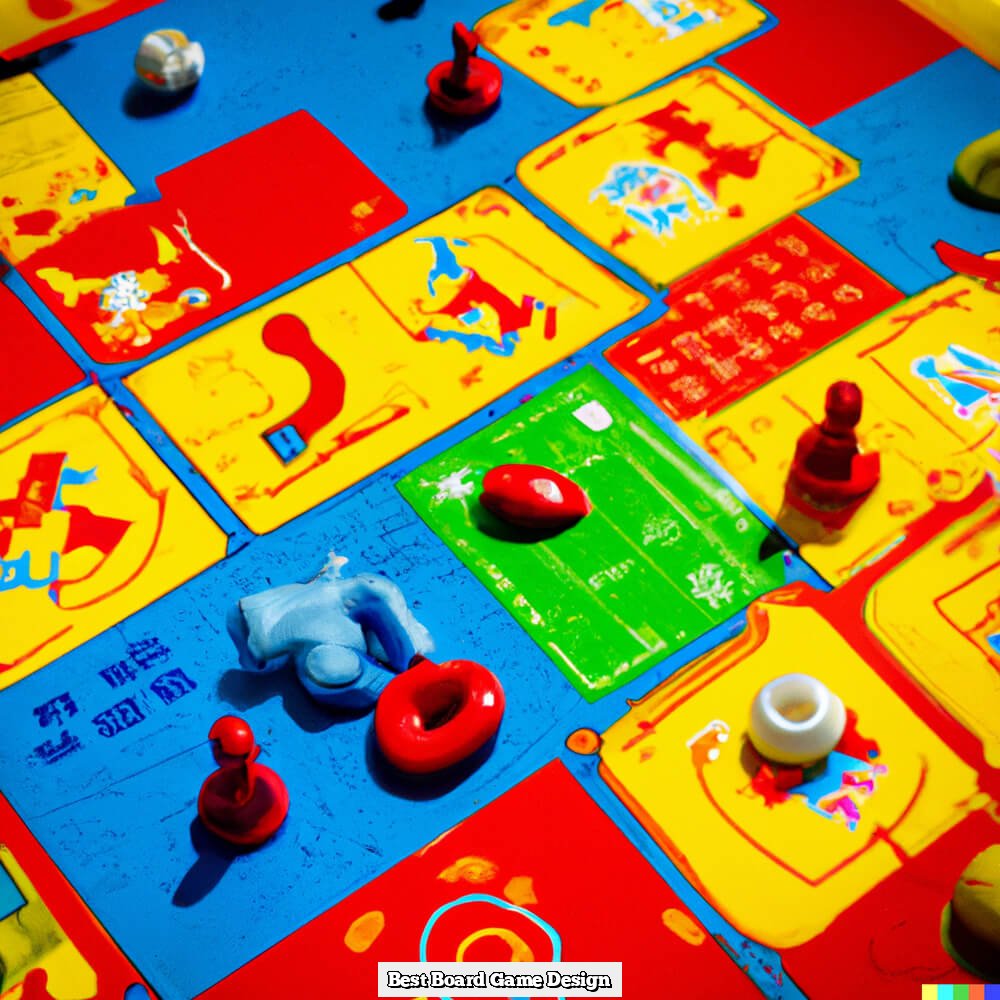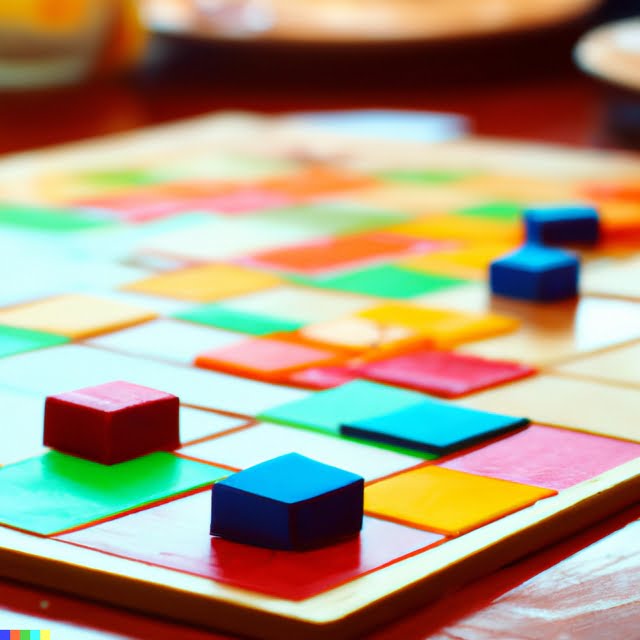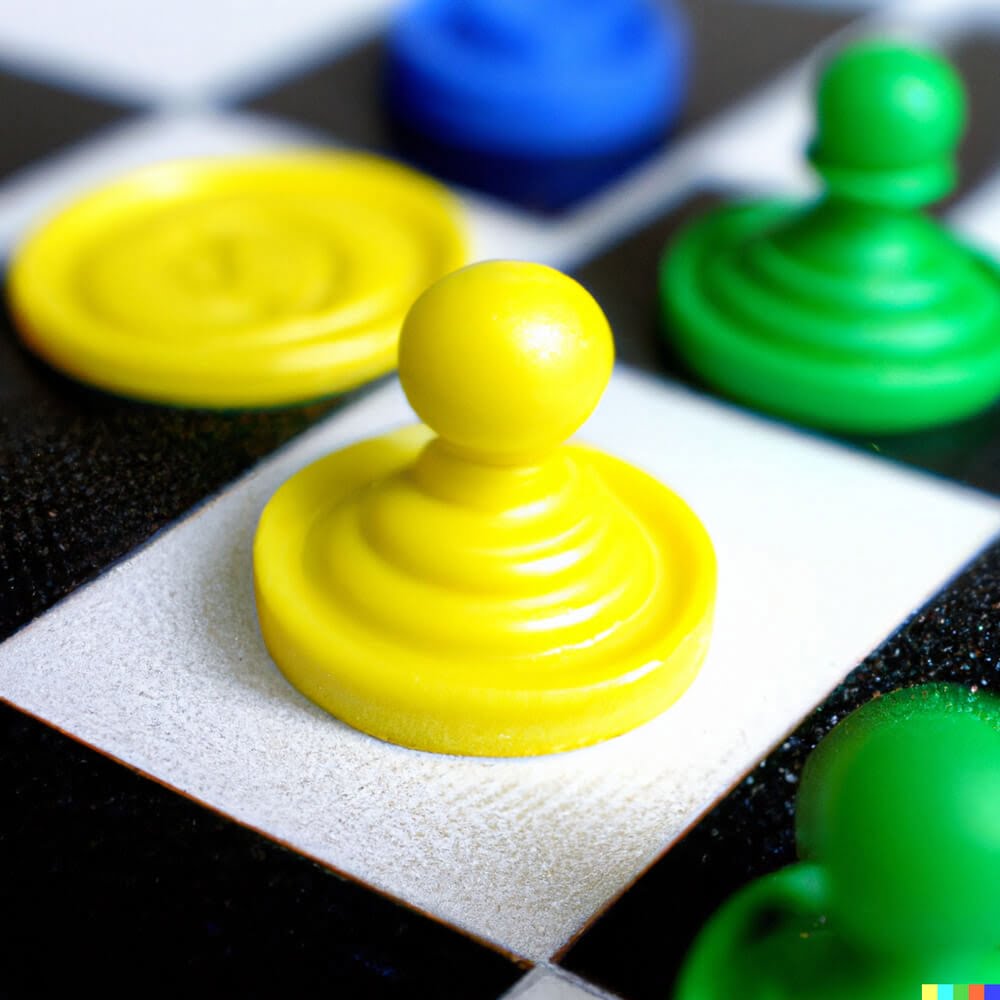Introduction
Designing and making a board game is a great way to challenge your creativity and entertain yourself and others at the same time. Board games have been popular for centuries, with some of the most beloved classic games such as Chess, Go and Monopoly still being played today. By designing your own board game you can build on what you love about these timeless favorites while adding in your own unique twist. The process of creating a board game involves thinking through design challenges, planning out its mechanics, and determining which components will be required for play. Regardless of its complexity or simplicity, all board games share the same basic construction steps: gathering materials; cutting out pieces; painting or decorating; assembling them together; and finally playing it!
When beginning the design process, the first thing to consider is what kind of game you would like to create. Do you want an abstract strategy game similar to Chess? Or perhaps you’d like to make a trick-taking card game like Spades? Perhaps an adventure game in which players explore dungeons is more up your alley? Brainstorm ideas with other people who may be interested in helping create or test prototypes as well.
Next comes the creation stage”and this is where things get fun! This can involve storyboarding different elements of gameplay, constructing prototype boards out of paper or cardboard that match up with sketches, determining available resources (e.g. dice, cards), picking artwork and graphic style, writing up rulebooks – the possibilities are truly endless! Pay close attention to each detail before proceeding onto later stages such as carving out wooden components like boards and pieces if necessary, or printing card decks and maps so that they are ready for playtesting.
The last stage is testing”which could potentially mean both solo and/or multi-player gaming sessions to see how balanced the ruleset is when multiple players compete along same lines against one another. If any issues arise during these trials then changes will need to be made prior to full production of whatever kind is desired – from mass printing booklets at home as DIY creations up until looking into larger scale manufacturing services such as 3D printing in cases where there needs to be reusable shaped components involved in playtime activities!
What Tools and Software are Needed to Design and Make a Board Game
To design and make a board game, you will need various tools and software. It is recommended that you have some prior knowledge of graphic design programs such as Adobe Illustrator or Photoshop. You can find tutorials online which will help you understand the basics of how to create players pieces, backgrounds, and illustrations for your game. Additionally, you may want to consider using computer assisted design programs such as AutoCAD to precisely measure the sizes of your game components and designs.
Other materials that are essential for making a board game include cardboard or plastic sheets and card stock on which to print all of your illustrations and components. Cardboard or plastic sheets are also important for constructing a sturdy box in which the components of the game are stored. You will also need pieces such as dice, tokens, player homes, cards etcetera which could potentially be either bought off the shelf or 3D printed yourself if desired. To make playing cards easier, consider buying physical card molds so that you can assemble them yourself at home quickly and easily! Finally it would be advisable to bring all these components together with equipment such as scissors, tape measurer, glue gun , staple gun and permanent markers.
Rules of the Game
To design and make a board game, the first step is to create the overall rules of the game that will make it fun and engaging. This includes deciding on how many players can participate and what kind of pieces each player might have, or what abilities these pieces might have such as movement rules or changing elements. You’ll also need to decide how players win and how far they can go when playing the game.
Continuing on with creating a board game, you must come up with winning criteria and conditions. How will a player know when they have won, and under what terms? Players should be aware of this right from the start so that the objective is clear before the match begins. Additionally, you may want to add specialty items such as gold tokens or invisible powers that can assist players in completing objectives during the match.
Further customization for your board game could include incorporating different levels of difficulty for players depending on their skill level. There are also different obstacle layouts that club together tiles to form complex crevices or bridges players would have to maneuver around in order to win ” this makes for a terrain more dynamic than traditional flat boards, adding another layer of strategy for experienced gamers. Finally, think about making your game replayable by setting obstacles that could become easier with experience or familiarity with them.
Designing User Interfaces
When designing a board game, the user interface should be carefully considered. The user experience of your board game should be intuitive, interactive and enjoyable for those playing the game. When drawing representations of this user experience, you’ll need to think about how the players will interact with each component within the game. This can include aspects such as how they move along the board and tokens they play with, to understanding how various cards or pieces interact with certain parts of theboard/pieces. By mapping out this interaction between components, you’ll facilitate a smoother gameplay experience for users.
You should also consider other elements of design that enhance user engagement, such as attractive visuals. High-quality artworks can help create a sense of immersion within your world and setting while promoting repeat plays by making it more interesting each time users come back to it. Creating artwork collectively is also a great way to get creative ideas from different people in order to make your board game more unique and fun. Consider providing visual aids such as tutorials or rules guides to make it easier for new players to learn about your game quickly and engage in replayable gameplay sessions afterwards. Finally, ensure that balancing decisions are taken into account when designing any pieces or complications involved in your board game so that players can have an even playing field when engaging with one another during their gaming session!
Choosing Components
When designing and making a board game, an important consideration is choosing the components that will be used to enhance the game. The pieces used to create a board game can have a significant influence on how much fun it is to play. Some basic pieces that typically appear in most games are cards, tiles, dice, pawns, and markers. There are also many more unique pieces that you could use like meeples (wooden figures) or character pieces that give the game some additional personality.The type of components you choose will depend on the nature of your game and its goals. For example, if the objective of your game is finding treasure with monsters lurking throughout then cards might be useful for representing items found while dice would be best for resolving combat. When thinking about which components would go best with each other, focus on how they all interact in order to provide an enjoyable experience for your players and add consistent structure to your ruleset.
Prototyping Your Creation
Before committing to a final version of your board game, you should take the time to prototype your creation. This involves creating a few test copies of the game so that you can playtest it and receive feedback on how it works. Your playtesters should be people who have no prior knowledge of the game and are able to give unbiased opinions and critique.
When prototyping your game, pay special attention to whether it meets all of its design goals, as planned in your design document. Ask yourself questions such as, “does this version provide enough replayability for players?” or “is the turn sequence too long?” Once playtested, review the notes taken during the playtest; analyze any problems identified by testers, tweak aspects where necessary and then move onto making a second prototype if needed ” up until you feel that the game meets or exceeds your expectations!
Finalizing Your Masterpiece
Making sure that your board game is consumer ready is a crucial step in the design and making process. In order to make your product suitable for sale or distribution, you need to be able to answer “yes” to the following questions:
Do you have quality control checks in place? Quality control checks are a necessity for any product released into the market, and board games are no different. It should include a review of all materials (game pieces, boards, instructions etc.) as well as thorough playtesting from people who perform all of the steps as they would in a real game.
Is there an age-appropriate way to advertise and package the game? Last but not least, how are you going to bring your product to people’s attention? Make sure that it is age appropriate as not doing so could land you in trouble with FCC or other agencies who regulate products targeted at certain age groups. When packaging the game make sure instructions are clear and easy to follow. The final packaging should be attractive enough for consumers to pick up off shelves and should also include safety warnings where necessary.
Conclusion
Designing one’s own board game can be a creative and rewarding experience. Not only does the creative journey allow for greater control over every aspect of how it looks and operates but also an emotional connection to the game that no mass produced version could ever offer. As well as benefiting from the satisfaction of bring an original concept to life, playing a game you have designed allows you a more intimate understanding of how it works, allowing you to utilise skills such as problem solving, logic, imagination and more.
Ultimately many hours need to be invested into turning your concept into tangible reality and there are sure to be many iterations along the way in order to create something both playable but grippingly entertaining too. Reaching the final stage of actually playing through the game is an extremely satisfying feeling and helps reinforce all the learning points gathered during planning and production; overall providing valuable insight for any future plans or projects which come your way.

I love playing all kinds of games – from classics like Monopoly to modern favourites like Ticket to Ride.
I created this blog as a way to share my love of board games with others, and provide information on the latest releases and news in the industry.





